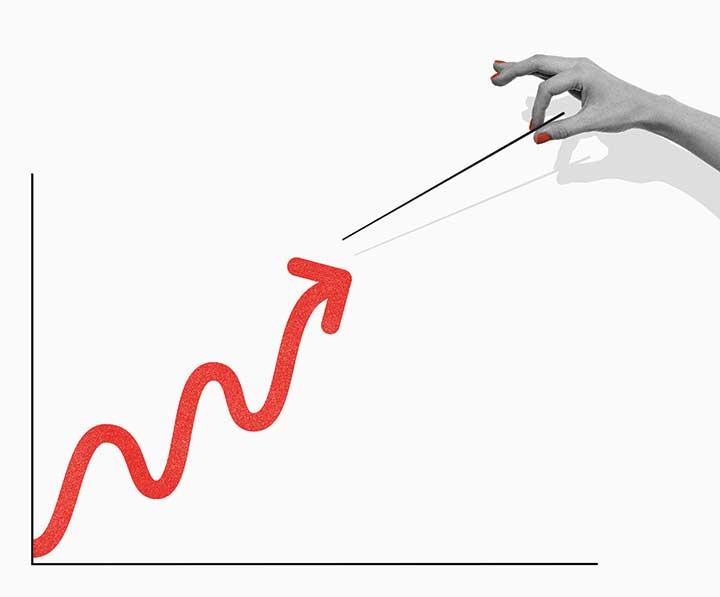Economics: Big Women on Campus
Having female department chairs may increase diversity and pay in academia
In fields like economics and accounting, women have long been underrepresented and tend to earn less than their male counterparts. One common suggestion for improving gender diversity is to appoint more women to leadership positions. But is that an effective strategy? According to new research by Andrew Langan, a Ph.D. candidate in economics at Princeton, the answer appears to be yes.

For his working paper “Female Managers and Gender Disparities: The Case of Academic Department Chairs,” Langan studied 35 years’ worth of data on department faculty and chairs in economics, sociology, accounting, and political science from more than 200 U.S. universities. (Academia is particularly well suited to this kind of study because of the amount of public data available, he notes.) Langan found that, on average, appointing female department chairs not only decreased the gender gap in the promotion and academic publication of assistant professors, it also reduced the pay gap between men and women by about a third and increased the number of incoming female graduate students by as much as 10 percent — with no sign of a change in students’ ability levels.
“What this says is that there’s something, on average, different about what’s going on in departments chaired by women from what’s going on in departments chaired by men,” Langan says, “and we should figure that out.”
Department chairs typically have two roles. First, they serve as unofficial role models for current and prospective faculty. Second, they control the allocation of departmental resources, admissions-committee staffing, approval of academic leave, negotiation for university resources, and responses to competing employment offers made to faculty members. It is in this second role that female chairs seem to exert the most influence, Langan says.
For example, department chairs can determine the number of classes each faculty member teaches and how salaries are negotiated for new hires — both of which may have a role in shaping the department’s recruitment and retention of women. Recent research by Langan and Princeton economics professor Leah Boustan ’00 also found that the structure of graduate programs — some aspects of which, such as whether there is a formalized process for adviser-student contact, are influenced by the chair — had an impact on the success of female students. (Read more about Boustan on page 23.) Langan also cites a paper by researchers at Carnegie Mellon and elsewhere, which found women in academia are more likely to participate in less-prestigious activities that typically do not lead to promotions, such as serving on committees.
“Maybe female chairs are less likely to always ask the female junior professors to do that kind of thing. Maybe they spread the work around differently,” posits Langan, adding that those are questions he’d like to pursue with additional research.
Since 2000, only two women have chaired an Ivy League Ph.D. economics department: at Princeton and Columbia. While Langan points out that simply appointing female chairs is not a panacea for improving gender diversity within academic institutions, the results from his paper suggest that departments can take a closer look at their administrative practices and the kinds of activities that chairs influence, “because it seems like they really do matter.”
It’s not only universities that can benefit from this self-assessment, Langan adds. “Department chairs occupy a mid-level management position that is important when thinking about a lot of other industries, especially other white-collar, high-skill professions,” he says.











No responses yet